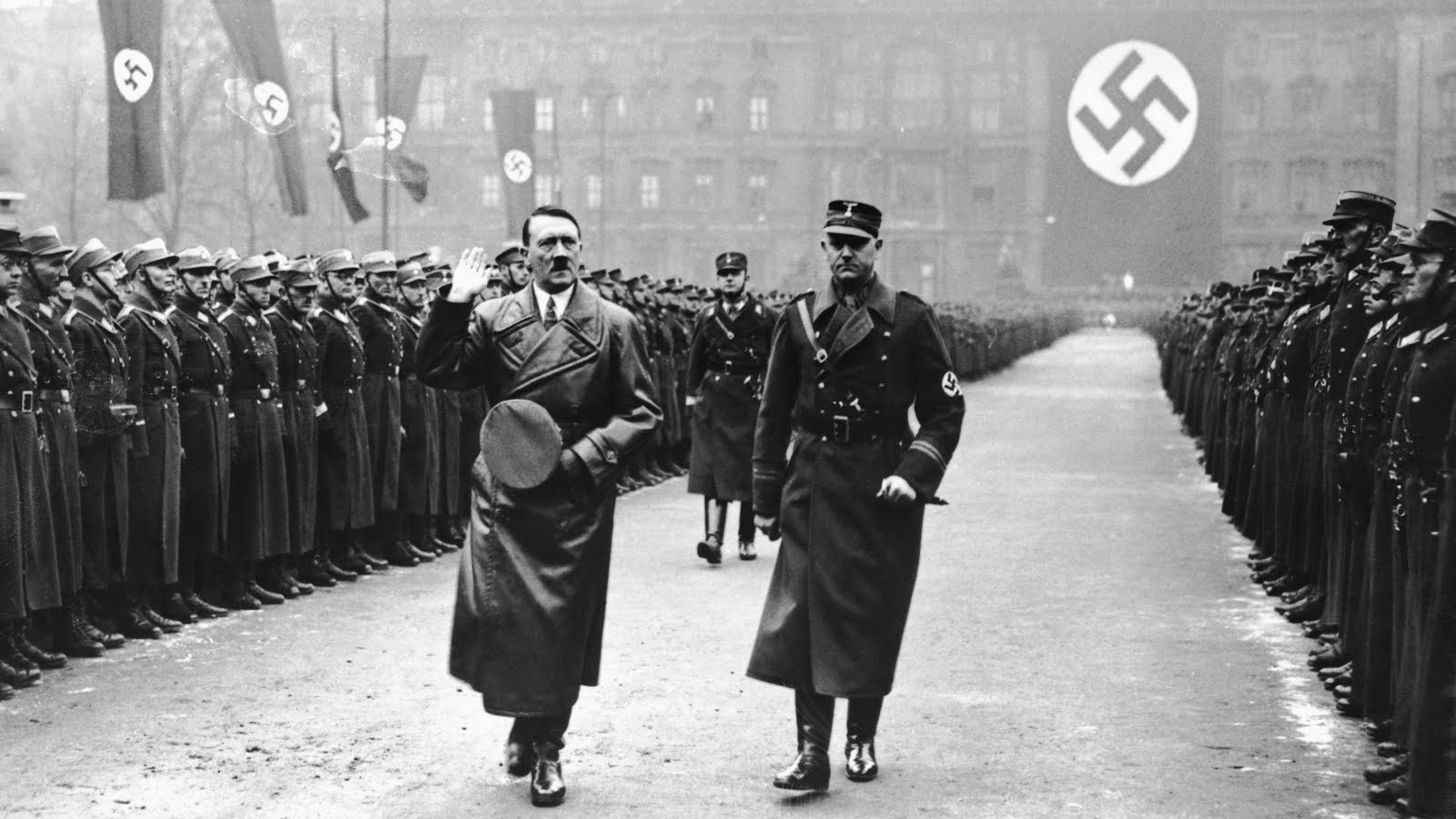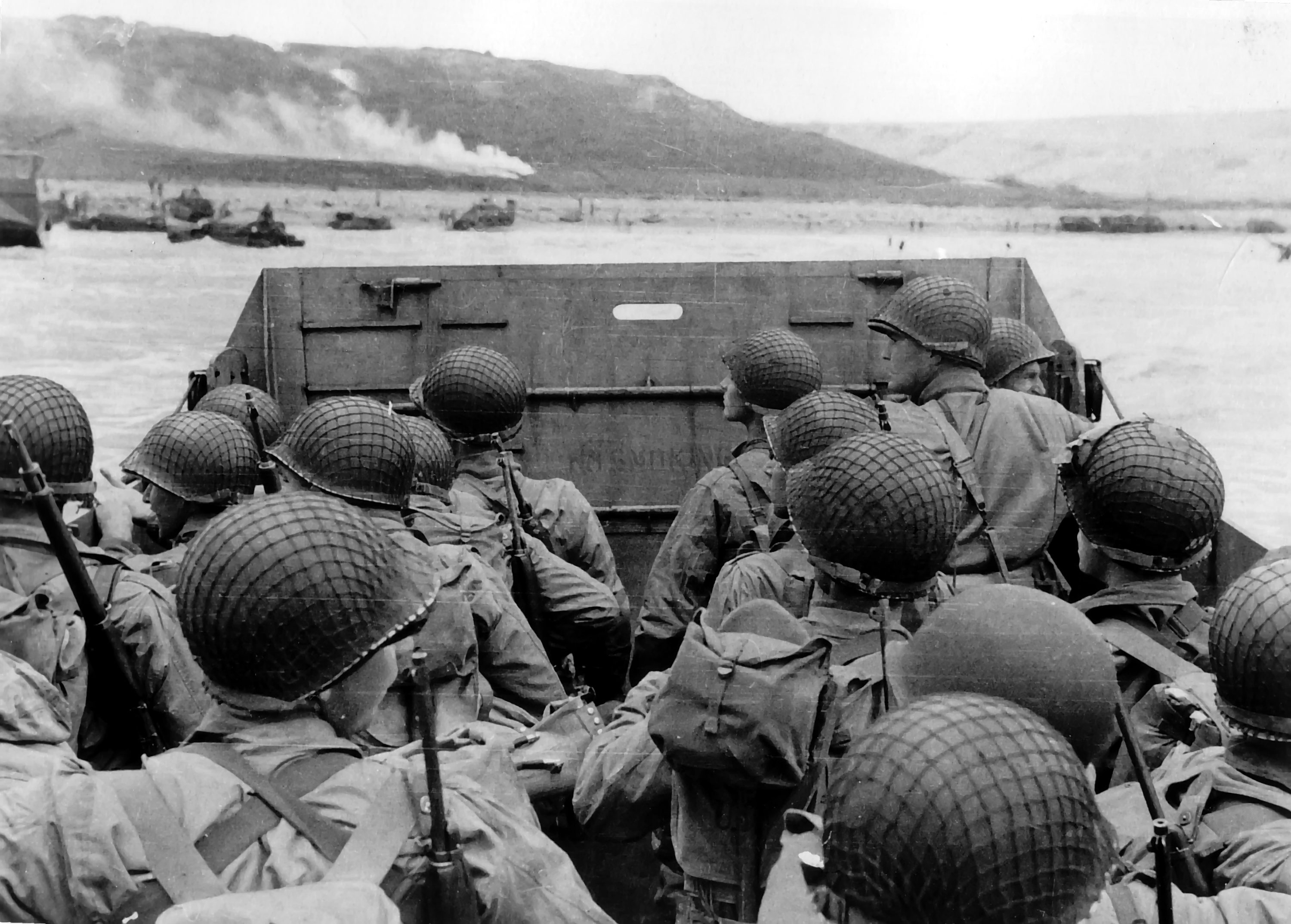World War Two Timeline
Home / History / World War Two / World War Two Timeline
Hitler brings War to Europe
World War Two Timeline
World War Two Timeline: 1939
- 1st September: Germany invades Poland.
- 3rd September: Britain and France declare war on Germany.
- 3rd September: Battle of the Atlantic starts when German U-boat U-30 sinks British passenger ship SS Athenia.
- 4th September: Allied naval blockade of Germany is announced and Germany starts a counter-blockade. This escalates into the Battle of the Atlantic which runs throughout the War. Typically German U-Boats, operating as wolf-packs, try to sink British merchant ships bringing necessary supplies of food, ammunition and equipment to Britain.
- 8th September: Petrol rationing is introduced in the UK.
- 17th September: The Soviet Union invades Poland.
- 27th September: Poland surrenders and is partitioned by Germany and the Soviet Union along the Bug River.
- September: I Corps of British Expeditionary Force arrives in France.
- October / November: II Corps of British Expeditionary Force arrives in France.
- 30th November: The Soviet Union invades Finland.
- 13th – 17th December: The Battle of the River Plate (part of the Battle of the Atlantic). The battle concludes when the Germans scuttling their pocket battleship, Admiral Graf Spee.
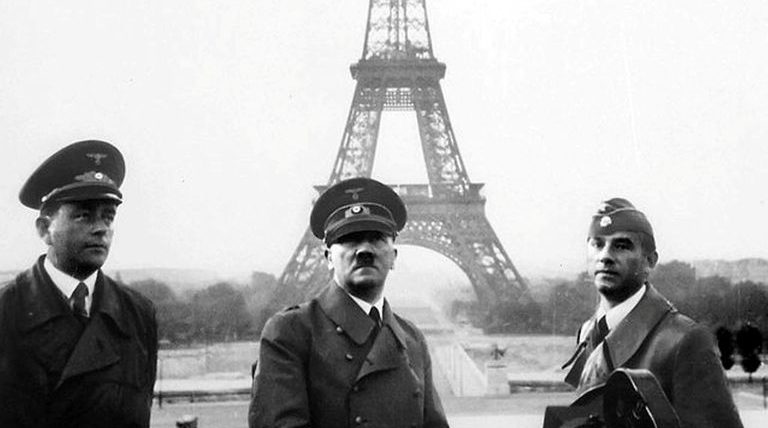
Hitler in Paris after the Fall of France
World War Two Timeline: 1940
- 8th January: Rationing in the UK is extended to bacon, butter and sugar. This is to be followed by successive ration schemes for meat, tea, jam, biscuits, breakfast cereals, cheese, eggs, lard, milk, and canned & dried fruit.
- January – April: Territorial Units join the British Expeditionary Force in France.
- 13th March: Finland agrees peace terms with the Soviet union.
- 9th April: Germany invades Denmark and Norway. Both countries capitulate almost immediately.
- 12th April: British troops land at Narvik in Norway.
- 10th May:
- Battle of France starts as Germany launches Blitzkrieg on the Netherlands, Belgium, Luxembourg and France.
- Winston Churchill becomes Prime Minister.
- 14th May: The Netherlands surrenders.
- 26th May: British troops in Northern France are isolated as French (on their right) and Belgium (on their left) armies collapse; Dunkirk is now only channel port not captured by the Germans; British withdrawal to Dunkirk begins.
- 28th May: Belgium surrenders.
- 26th May – 4th June: British Expeditionary Force is evacuated from Dunkirk.
- 8th June: British troops evacuated from Narvik.
- 10th June:
- Italy declares war on France & Britain.
- French Government evacuates Paris.
- 11th June:
- British forces in Egypt undertake a series of raids against Italian positions in Libya to take the pressure off the French in Tunisia who are under attack from the Italians in Libya.
- Italy commences air attacks on Malta as The Battle of Malta (aka the Seige of Malta) starts.
- 14th June: Germany captures Paris.
- 22nd June: France Surrenders.
- 10th July – 31st October: The Battle of Britain; the Luftwaffe fails to defeat the RAF and this forces Hitler to postpone any invasion of Britain.
- 13th July: BBC news readers are named for the first time. Frank Phillips was the first on the lunchtime news on this date followed by all the others including Alvar Lidell.
- 8th August: Mussolini orders the Italian army to invade British-held Egypt.
- 7th September: Germany starts bombing British cities – this is to become known as The Blitz.
- 27th September: Germany, Italy and Japan sign the The Tripartite Pact, also known as the Berlin Pact, in Berlin.
- 11th / 12th November: The Royal Navy attacks the Italian fleet at Taranto sinking numerous Italian warships.
- 14th November: Germany launches heaviest bomb raid yet – 515 Luftwaffe planes bomb Coventry.
- 9th December: British forces in Egypt under General Richard O’Connor counter-attack Italians in North Africa.
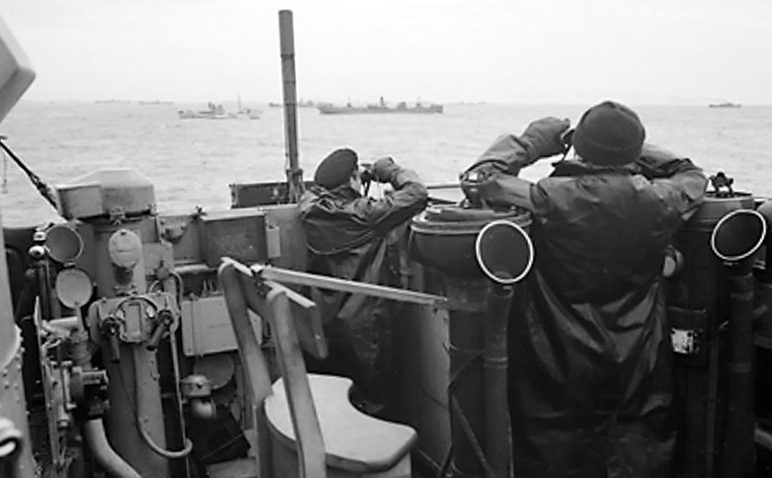
The Atlantic Convoys are Britain’s life-line
World War Two Timeline: 1941
- Throughout the year: The Blitz continues against Britain’s major cities and ports.
- January: Germany joins with Italy with air attacks on Malta in what became known as the Seige of Malta.
- 22nd January: British and Commonwealth forces in North Africa under General O’Connor capture Tobruk and drive further west into Libya to El Agheila.
- February: The Afrika Korps under the command of General Rommel lands in Tripoli.
- March / April: British forces in North Africa are reduced by redeployment to Greece. Rommel pushes the British back to the Egyptian border leaving the garrison at Tobruk isolated.
- 6th April: Germany invades Greece and routs Allied forces.
- 7th April: British desert commander General O’Connor is captured by the Germans.
- 21st May – 1st June: Germany captures Crete from Britain.
- 24th May: HMS Hood is sunk by the German Battleship Bismark at the Battle of Denmark Strait.
- 27th May: German Battleship Bismark is sunk by the Royal Navy in the Atlantic (part of the Battle of the Atlantic).
- 15th – 17th June: Britain’s Operation Battleaxe in North Africa fails to relieve the Seige of Tobruk.
- 20th June: Following the failure of Operation Battleaxe, General Wavell is replaced by General Auchinleck as Commander-in-Chief, Middle East.
- 22nd June: Hitler begins Operation Barbarossa – the invasion of Russia.
- 9th July: Alan Turing at Bletchely Park cracks the German’s Enigma Code.
- September: British forces in North Africa are reinforced and re-named the Eighth Army.
- 8th September: Germans begin the Seige of Leningrad.
- 2nd October: German offensive to capture Moscow begins.
- November / December: In Operation Crusader the Eighth Army relieves the Seige of Tobruk and pushes Rommel back to where he started at El Agheila.
- 7th December: Japan attacks Pearl Harbour.
- 8th December: USA declares war against Japan.
- 10th December: The Royal Navy’s new aircraft carrier HMS Indomitable fails to join the Force Z Squadron in the Battle for Malaya and Singapore having run aground in the Caribbean. This leaves the squadron without air cover. When attacked by Japanese planes, Britain’s largest battleship, HMS Prince of Wales is sunk together with HMS Repulse.
- 11th December: Germany declares war against the USA who reciprocate with a declaration of war against Germany. Germany’s declaration is believed to be an impulse decision by Hitler alone who probably thought it was Germany’s obligation in the Tripartite Pack.
- 14th December: Japanese invasion of Burma starts.
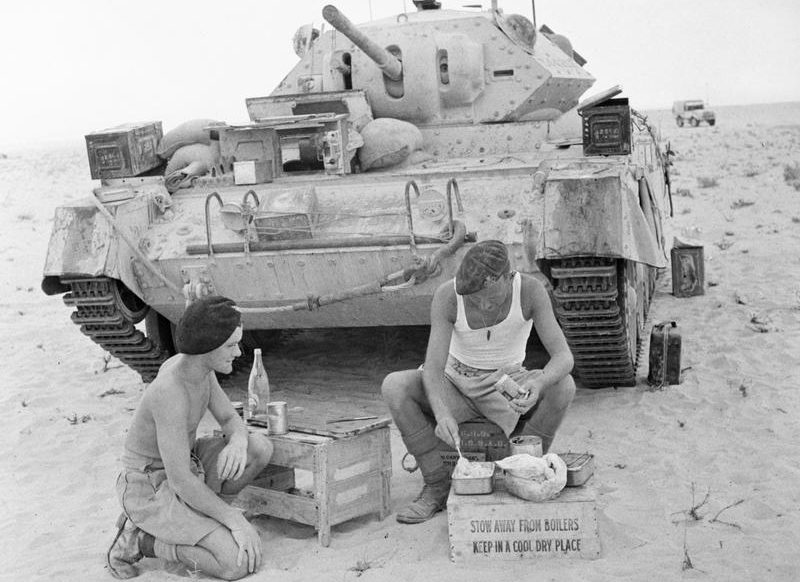
Britain makes the War in Egypt the priority
World War Two Timeline: 1942
- 15th February: Singapore falls to the Japanese who take 132,000 military prisoners, plus a similar number of civilian prisoners, many of whom would die in Japanese Prisoner of War camps.
- March: Germany starts deportations of Jews to Concentration Camps.
- 7th March: Rangoon in Burma falls to the Japanese.
- April: Germany and Italy heighten their aerial attacks on Malta in what becomes known as the Seige of Malta.
- May: Extermination of Jewish people begins in Concentration Camps.
- May 1942: British army evacuates Burma.
- 4th – 7th June: American naval victory over Japan at the Battle of Midway – a turning point in the Pacific War.
- June: Reinforced with additional troops, Rommel attacks again and defeats the British at Gazala and captures Tobruk. General Auchinleck now takes personal command of the Eighth Army.
- May – November: These months mark the height of the Battle of the Atlantic (“Second Happy Time”) with British merchant shipping losses peaking at around 140 ships per month.
- 14th July: Air Marshal Keith Park takes command of Malta’s air defences and turns the tide against the Luftwaffe in the Battle of Malta.
- 17th July: First Battle of El Alamein; while preparing defensive positions at El Alamein, Auchinleck successfully fights strong delaying actions at Mersa Matruh (26–27 June) and Fuka (28 June) before falling back to El Alamein where the Eighth Army fights an exhausted Axis Army to a standstill.
- 8th August: General Auchinleck is replaced by General Alexander as Commander-in-Chief in North Africa.
- 13th August: General Montgomery takes command of the Eighth Army.
- 25th August: German Seige of Stalingrad begins.
- 30th August – 5th September: Battle of Alam el Halfa, Rommel fails to break through the British lines at El Alamein.
- 23rd October – 11th November: Britain’s Eighth Army defeats Rommel at the Second Battle of El Alamein.
- 8th November: Operation Torch – British & US troops in British-American First Army commanded by General Eisenhower land in Morocco and Algeria.
- 20th November: The Battle of Malta (aka the Seige of Malta) finally ends.
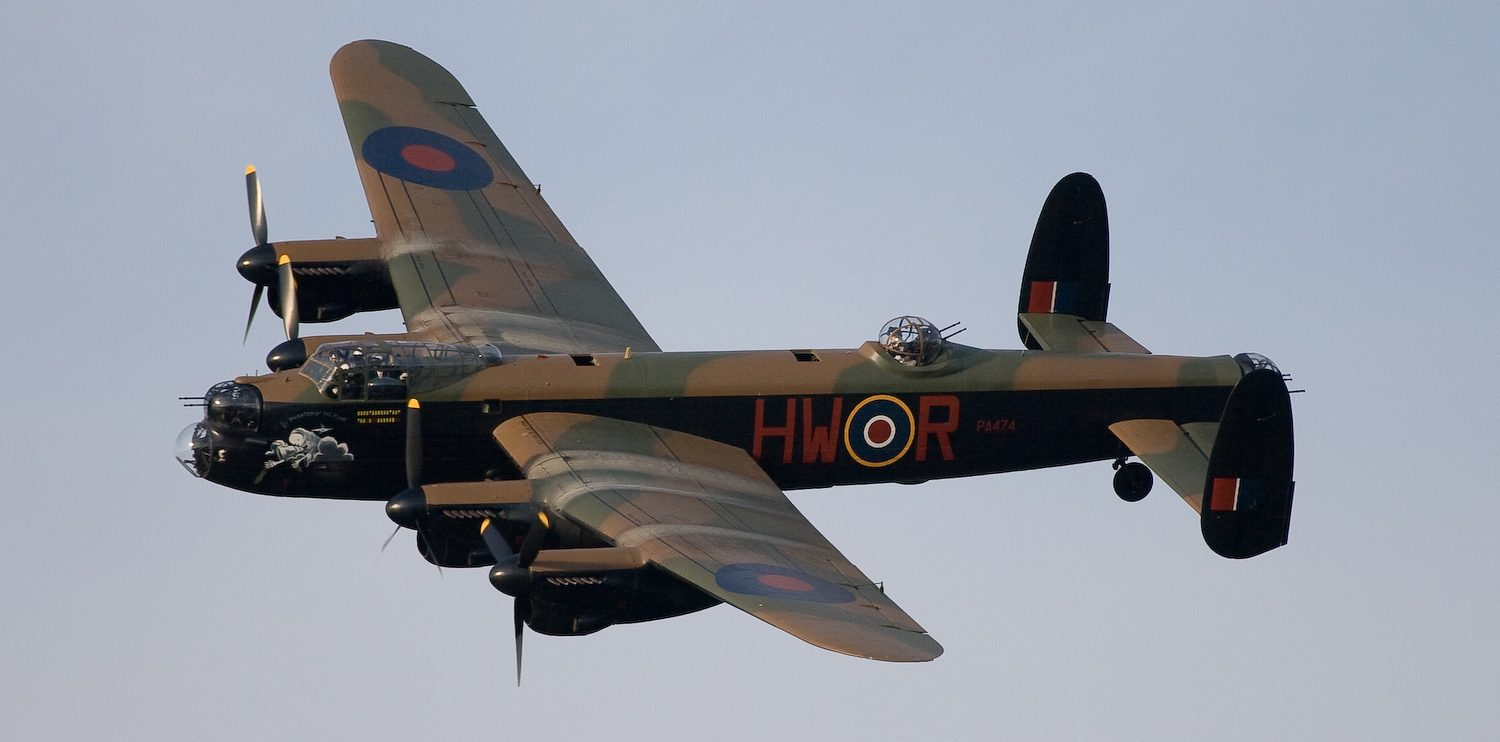
The Second Front: Bombing Germany
World War Two Timeline: 1943
- 2nd February: German Army at Stalingrad surrenders lifting the Seige of Stalingrad and marking Germany’s first major defeat in Russia.
- 8th February – 30th April: First Chindits Expedition: They advance into Burma under Brigadier Orde Wingate, penetrating behind enemy lines and disrupting Japanese communications and supplies.
- 19th – 23rd February: Rommel defeats the Americans at the Battle of Kasserine Pass.
- 13th May: 267,000 German and Italian soldiers surrender to the Allies in Tunisia bring the North African campaign to an end. This was the largest surrender of Axis troops during the war.
- 17th May: RAF carries out the Dambuster Raids.
- 5th -16th July: The Soviet Union defeats Germany at the Battle of Kursk – the biggest tank battle of the war.
- 10th July: British and American troops invade Sicily.
- 24th July: The RAF and USAF bomb Hamburg. 42,600 Germans killed.
- 3rd September:
- British Eighth Army crosses from Sicily onto Italian mainland.
- Italy signs armistice with the Allies.
- 8th September: Italy surrenders to the Allies but Germany occupies the country and digs-in to fight the Allies.
- 9th September:
- US & British troops in the American Fifth Army under General Mark Clarke land at Salerno in Italy.
- Further British troops land at Taranto in Italy.
- 23rd September: Mussolini is established by the Germans as their puppet Fascist leader in Northern Italy based at Salo on Lake Garda.
- 13th October: The liberated part of Italy declares war on Germany.
D-Day arrives at last
World War Two Timeline: 1944
- 17th January: The Allies begin the offensive against Germany along the Gustav Line in Italy.
- 22nd January: The Allies land at Anzio (behind German lines).
- 27th January: The Seige of Leningrad is relieved.
- 15th – 18th February: The Allies bomb the monastery at Monte Cassino on the Gustav Line.
- 8th March: Japanese Army in Burma invades India.
- 8th March – 22nd June: British Fourteenth Army under General Bill Slim are beseiged for months before breaking out and inflicting the heaviest defeat of the war on Japan at the Battle of Imphal & Kohima in Burma.
- 24th March: Chindit leader, Brigadier Orde Wingate is killed in a plane crash.
- April: British counter-attack at Imphal & Kohima pushes the Japanese back into Burma.
- 18th May: Polish troops capture Monte Cassino.
- 5th June: The Allies enter Rome.
- 6th June: D-Day – the invasion of France and start of Battle of Normandy.
- 15th June: Germany launches the first V-1 Flying Bomb or Buzz Bomb against England from sites in the Pas de Calais. (Known by the British as The Doodlebug.)
- 27th June: Allied Armies capture Cherbourg an important target in the Battle of Normandy.
- 20th July: Allied Armies capture Caen giving them victory in the Battle of Normandy.
- 21st July – 10th August: USA defeats Japan at the Second Battle of Guam to retake the Mariana Islands.
- 22nd August: The Germans retreat to the Gothic Line in Northern Italy.
- 25th August: The Allies liberate Paris.
- 2nd September:
- The British Eighth Army in Italy breaks the Gothic Line.
- US troops from the Fifth Army capture Pisa.
- 8th September: Germany starts launching V2 Rockets against Allied targets especially London.
- August to November: During the monsoon, the British 14th Army (“The Forgotten Army”) under General Bill Slim push the Japanese back through Burma.
- 20th October: American troops land in the Philippines to commence its liberation from Japan.
- 16th December: Germany launches surprise attack against US troops through the Ardenne Forest in what was to become known as the Battle of the Bulge.
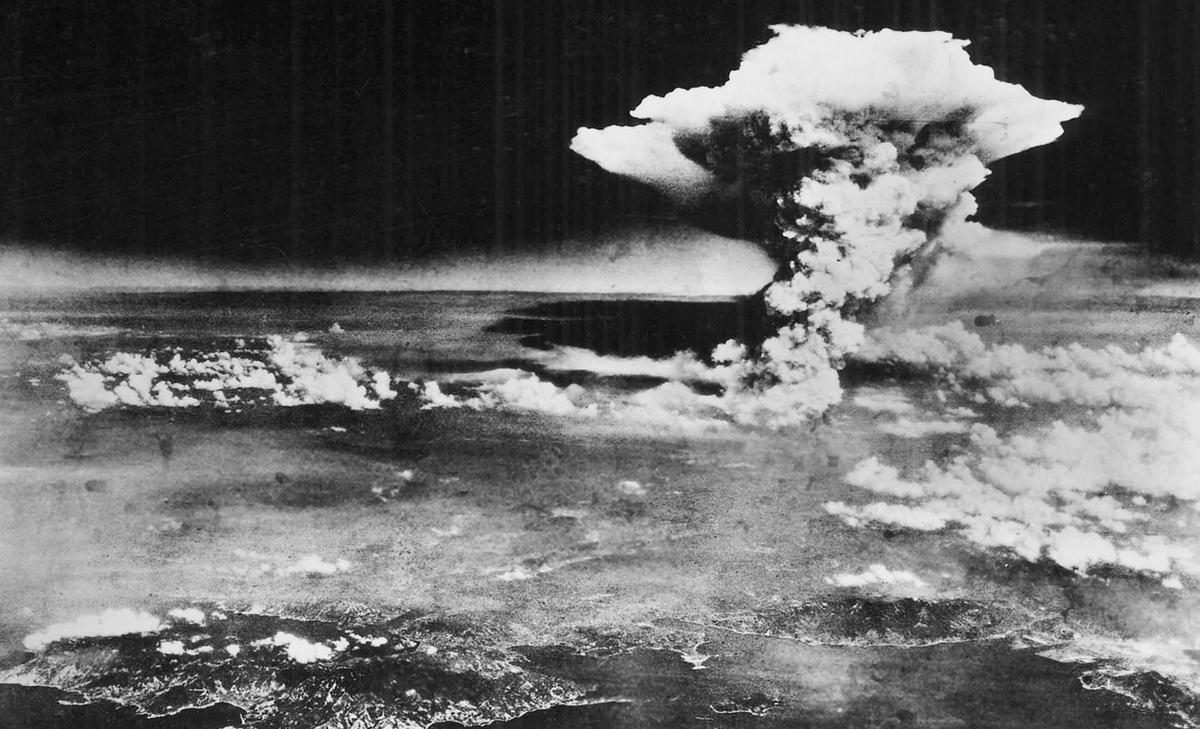
Atomic Bombs knock Japan out of the War
World War Two Timeline: 1945
- 16th January: The Battle of the Bulge ends in victory for the Allies.
- 27th January: Auschwitz is liberated by Soviet troops.
- 13th – 15th February: The RAF & USAF bomb Dresden. 25,000 Germans killed.
- 12th April: Allied troops on the Western Front start crossing the Rhine.
- 12th April: Harry S. Truman becomes President of the US on Roosevelt’s death.
- 15th April: Soviets troops reach the outskirts of Berlin.
- 22nd April: The Japanese evacuate Rangoon in Burma.
- 28th April:
- Mussolini is executed by Italian partisans.
- The British Eighth Army captures Venice.
- 29th April: The Surrender of Caserta: The German Army in Italy surrenders to Field Marshal Harold Alexander to become effective on 2nd May 1945.
- 30th April: Hitler commits suicide.
- 4th May: The German Army (in Germany) surrenders to Field Marshall Bernard Montgomery.
- 7th May: Germany signs unconditional surrender.
- 22nd June: USA defeats Japan to capture Okinawa.
- 26th July: Clement Attlee replaces Winston Churchill as UK Prime Minister.
- 6th August: Atomic bomb dropped on Hiroshima.
- 9th August: Atom bomb dropped on Nagasaki.
- 14th August: Japan surrenders.

